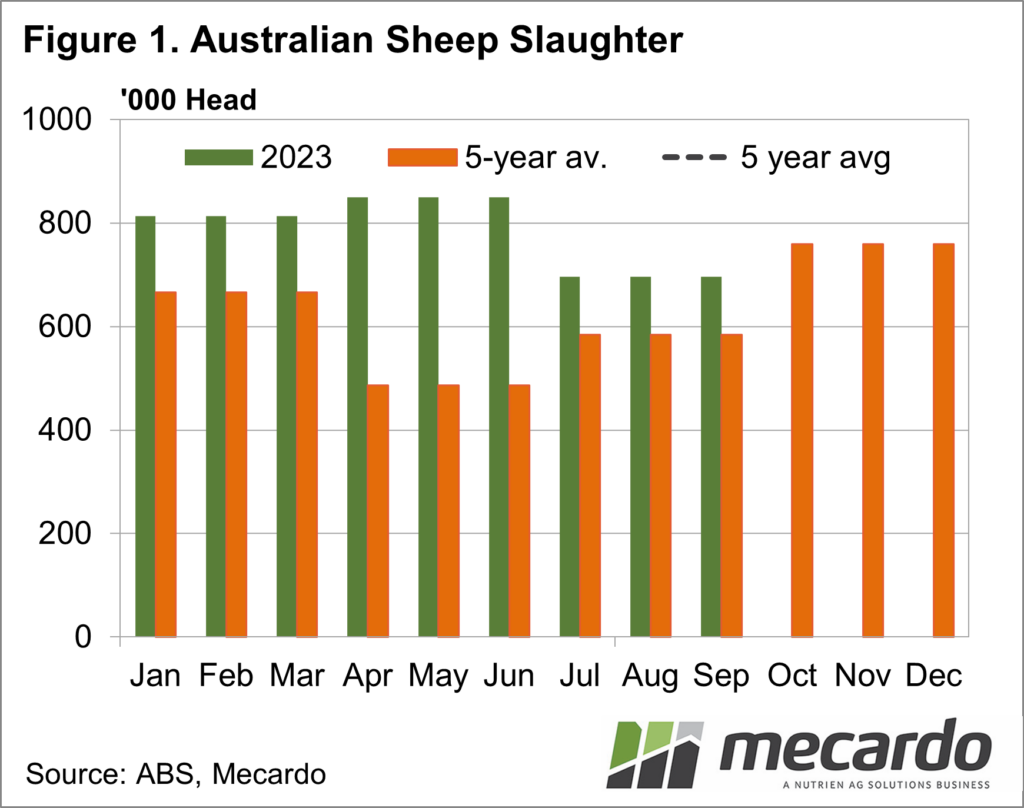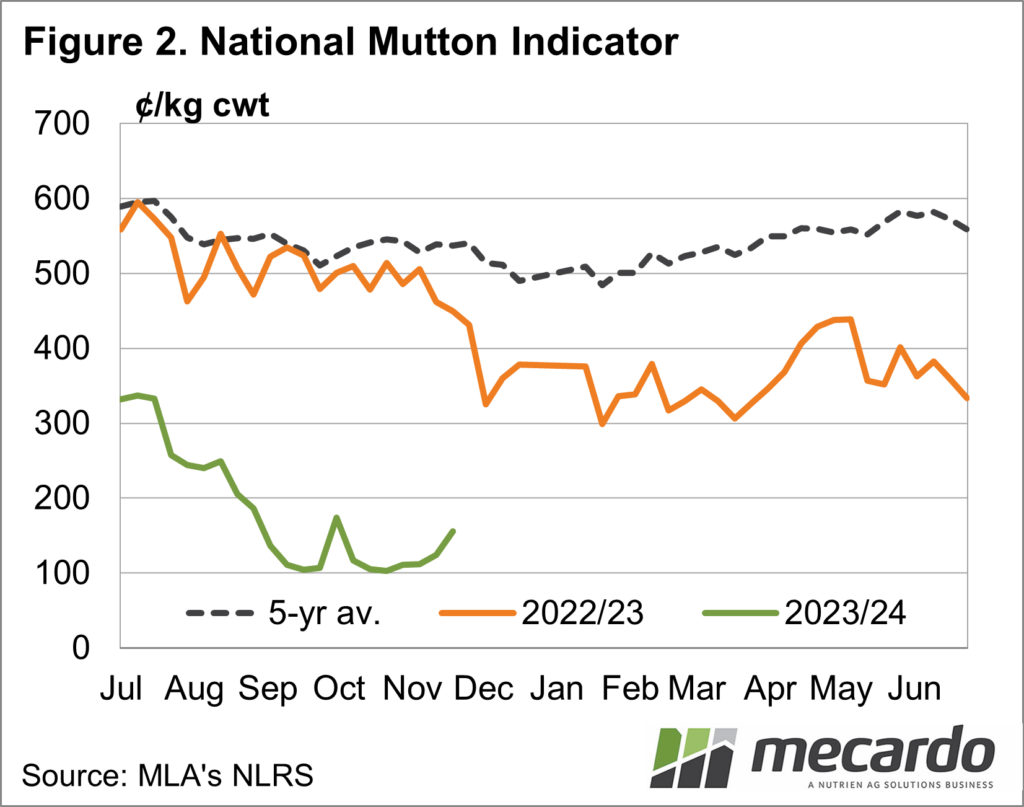Sheep slaughter for the September 2023 quarter rose year-on-year but dropped in comparison to the previous quarter, the first time this has occurred since 2016. These figures come from the latest Australian Bureau of Statistics quarterly livestock data drop, released last week, and they show us that while lambs are breaking records, sheep slaughter is far from historically at its highest.
We looked at what this year’s record lamb
slaughter so far meant for the industry last week here. In comparison, sheep throughput appears
to have made way for some of the increased lamb kill. Of course, it has far
from plummeted, rising nearly 35% year-on-year and the year-to-September sheep
slaughter has now surpassed the total annual throughput of the past five years.
The July-September sheep kill also sat 19% above the five-year average for the
quarter, and 13% higher than the 10-year figure, reaching its highest level
since 2018.
However, a further look back shows us that
September quarter sheep slaughter has surpassed this year’s rates more than
half a dozen times in the past 20 years. A majority of these fell in the five
years to 2008, which aligned with Meat and Livestock Australia’s most recent
flock projections which indicated sheep numbers reached their highest levels
since 2007 this year. Countering the growing flock numbers when it comes to
sheep slaughter has no doubt been in demand, which is mainly dictated by
processing capacity and the export market.
The mutton price for the 2023-24 year so far is
averaging 265¢/kg, its lowest level since 2012-13, and close to 40% lower than
the 2022-23 average. As we can see from Figure 2, it has traded at a 300¢/kg or
more discount to the five-year average since July. This has no doubt
contributed to the gross value of sheep and lamb production falling by more
than 18% for the quarter, which MLA reports is the first time this value has
fallen below $1 billion since ABS started recording producer receipts.
What does it mean?
Record lamb slaughter would indicate plenty of young ewes are being turned off, the lacklustre demand and very low prices seems to have slowed sheep slaughter in the second half of this year more likely because of the complete lack of market rather than due to producer decisions or sentiment.
According to the averages, the December quarter is usually the biggest for sheep slaughter, and those figures will be a good indication of whether breeding ewe destocking has ramped up in the spring.
Have any questions or comments?
Key Points
- Sheep slaughter rose nearly 35% year-on-year for the September quarter, surpassing both the five and 10-year average for that period.
- Sheep slaughter for the first 9 months of 2023 has already surpassed year-total throughput for the past three years.
- Sheep and lamb slaughter gross value fell below $1 billion for the first time since the ABS began recording the figure.
Click on figure to expand
Click on figure to expand
Data sources: MLA, ABS, Mecardo



